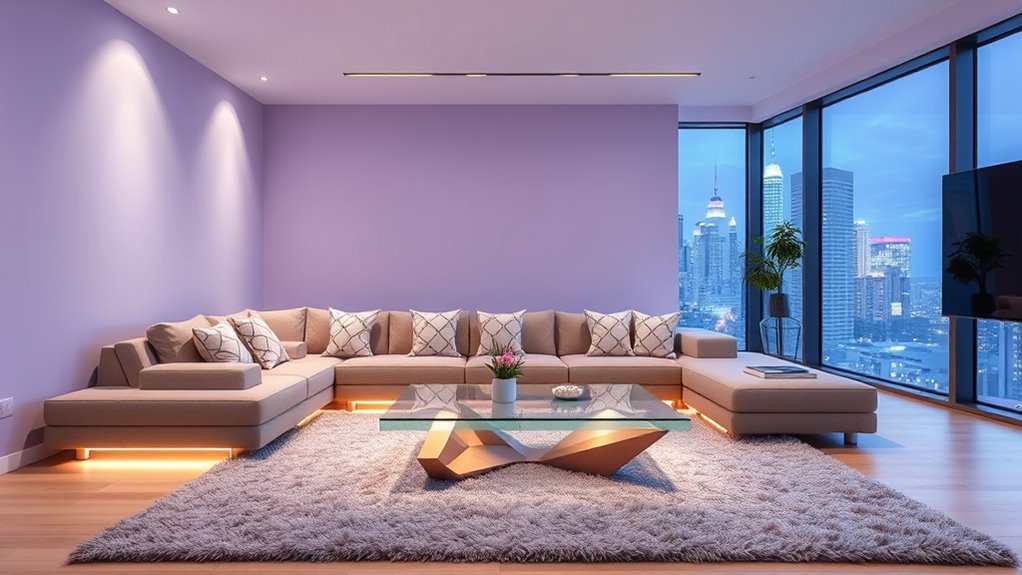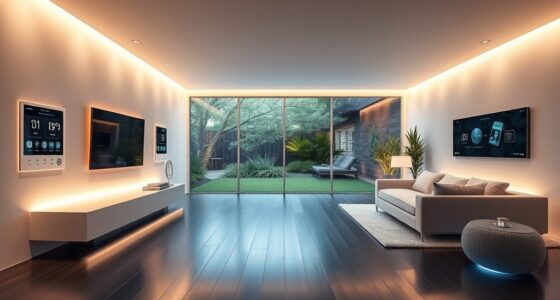Tiny homes, once seen as affordable and eco-friendly, are quickly fading from popularity due to practical issues like cramped space and zoning hurdles. Smart home gadgets promised convenience but often underperform, making them more of a hassle. Eco-friendly options are losing appeal as costs rise and benefits become less clear. If you want to stay ahead of the game, understanding what’s replacing these trends will help you adapt effortlessly.
Key Takeaways
- Tiny homes have rapidly declined due to practicality issues, safety concerns, and zoning restrictions, losing their initial appeal.
- Smart home technology, once hyped for convenience, faces privacy, complexity, and cost challenges, making it less attractive.
- Eco-friendly living has waned as rising costs and market saturation diminish perceived benefits and enthusiasm.
- Changing buyer preferences favor quick, affordable, urban-centric homes over high-maintenance, sprawling suburban properties.
- Future home trends focus on flexible, technology-integrated designs, reducing the relevance of fad-based features like tiny homes.
The Rise and Rapid Decline of Tiny Homes
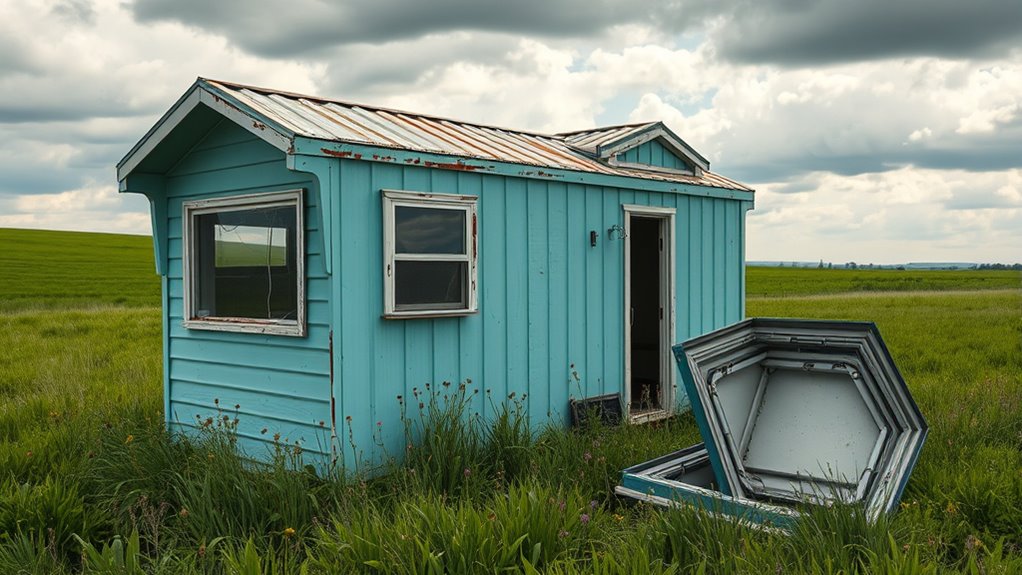
Initially, tiny homes captivated many because they promised affordable, minimalist living. You might have admired their clever use of space and simple design, making them perfect for downsizing or reducing expenses. These micro homes often showcased minimalist design principles, emphasizing clean lines and multifunctional furniture to maximize limited square footage. For a time, they symbolized independence and eco-friendly lifestyles, attracting trendsetters and minimalists alike. However, as the novelty wore off, many realized that tiny homes aren’t as practical as they seem. Limited space can feel cramped, and zoning restrictions often complicate ownership. The initial excitement faded quickly, leading to a decline in popularity. Additionally, some enthusiasts overlooked the importance of safety standards and proper insulation, which are crucial for comfortable living. What once seemed like an innovative solution now appears less appealing, marking the rapid fall of the tiny home trend.
Smart Home Technology: From Must-Have to Overhyped
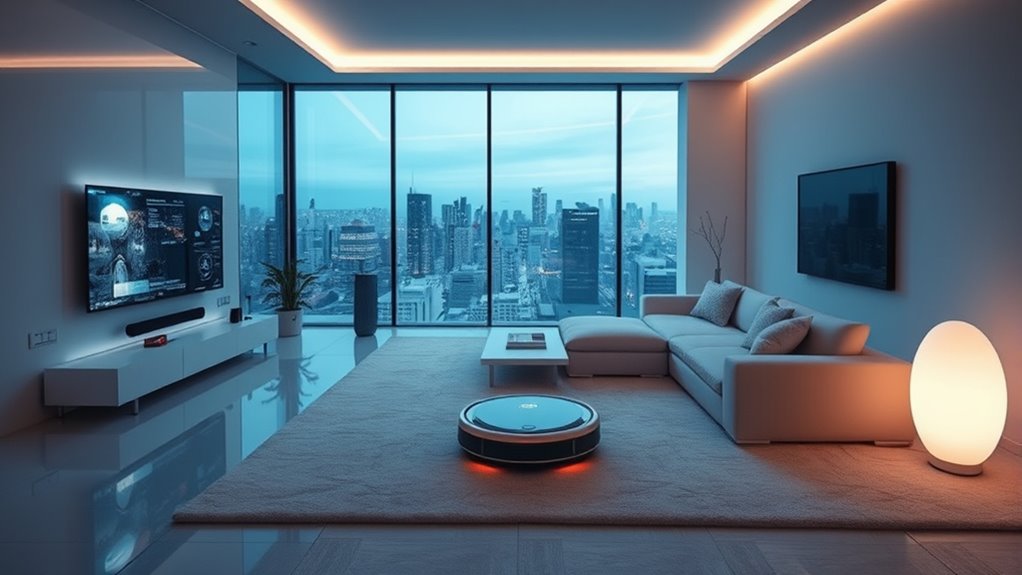
Smart home technology once seemed essential for modern living, promising increased convenience, security, and energy efficiency. But lately, it’s become overhyped, and many find it less indispensable. Voice assistants, once hailed as the future of home automation, now often underwhelm or cause privacy concerns. You might have invested in smart thermostats, locks, or lights, only to realize they add complexity rather than simplicity. Here’s a quick look at how the landscape is shifting:
| Feature | Promise | Reality |
|---|---|---|
| Voice Assistants | Seamless control | Overpromised, privacy issues |
| Home Automation | Automated routines | Difficult setup and bugs |
| Security | Smarter protection | Overhyped, false sense of safety |
| Energy Efficiency | Cost savings | Marginal impact, high costs |
Many now question whether smart home tech truly enhances daily life. The evolving technology landscape has led consumers to reconsider the true benefits of these devices.
Eco-Friendly Living: The Trend That Lost Its Spark
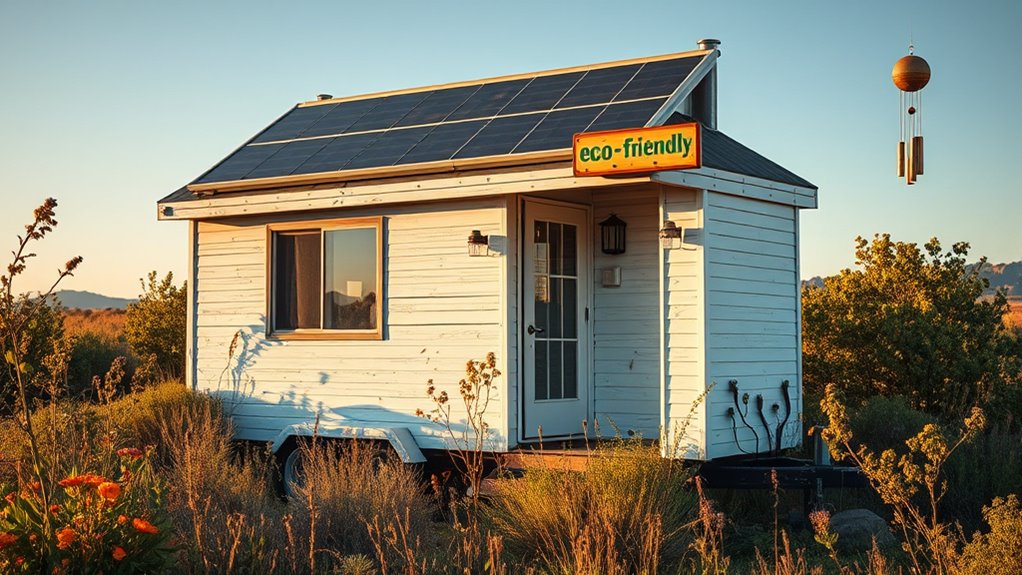
Eco-friendly living once captured widespread enthusiasm as a simple way to reduce your carbon footprint and save money, but that enthusiasm has waned. Many homeowners embraced sustainable materials like recycled wood and eco-friendly insulation, and installed renewable energy systems such as solar panels. However, the initial excitement has faded as costs rise and the benefits become less clear-cut. Some find that sustainable materials are more expensive or harder to source, while renewable energy installations don’t always deliver the promised savings. Additionally, the market has become saturated with green products, making eco-friendly choices feel less special. As a result, fewer people see eco-friendly living as a priority, and the trend has lost much of its original spark. Moreover, the perceived benefits of sustainable living are often overshadowed by practical challenges and market saturation.
Changing Buyer Preferences and Market Impact
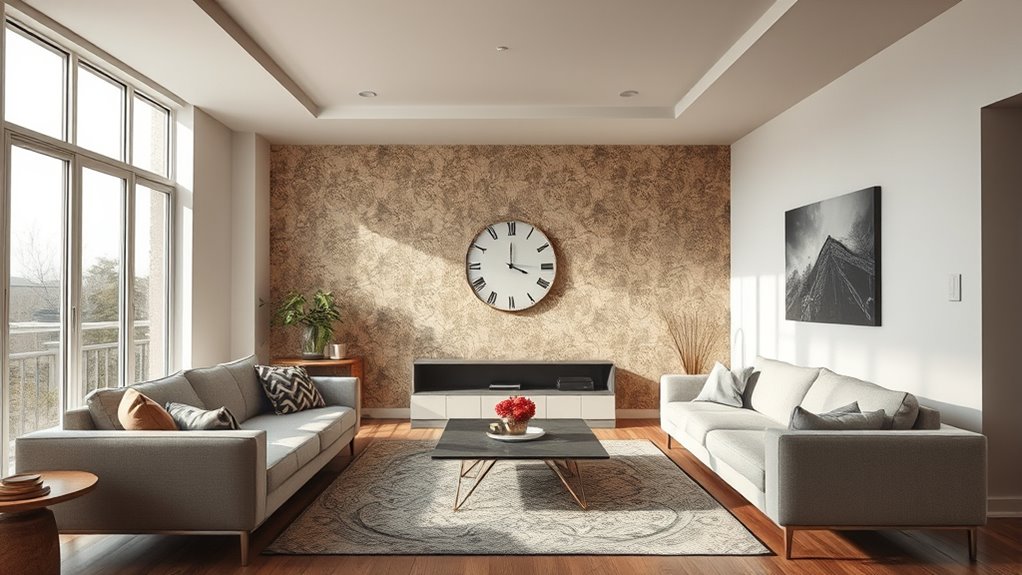
As preferences among homebuyers shift towards convenience and affordability, the market responds by favoring properties that prioritize quick move-ins and low maintenance costs. This change reduces demand for sprawling homes in suburban areas, which often come with higher upkeep and longer commutes. Buyers now favor homes closer to urban centers, reducing urban sprawl and increasing density. While some still seek luxury upgrades, they’re more focused on functional, move-in-ready features rather than extensive customization. The market’s evolution affects home designs and location choices, emphasizing practicality over extravagance. Additionally, home theatre projectors are becoming an increasingly popular feature for modern homes, reflecting the shifting focus toward versatile and entertainment-friendly spaces. Here’s a snapshot of these trends:
| Trend | Impact | Buyer Preference |
|---|---|---|
| Urban sprawl | Decline in demand for large lots | Compact, central locations |
| Quick move-ins | Increased sales speed | Ready-to-live homes |
| Luxury upgrades | Focus on essential features | Practical, cost-effective options |
What Comes Next in Home Innovation?
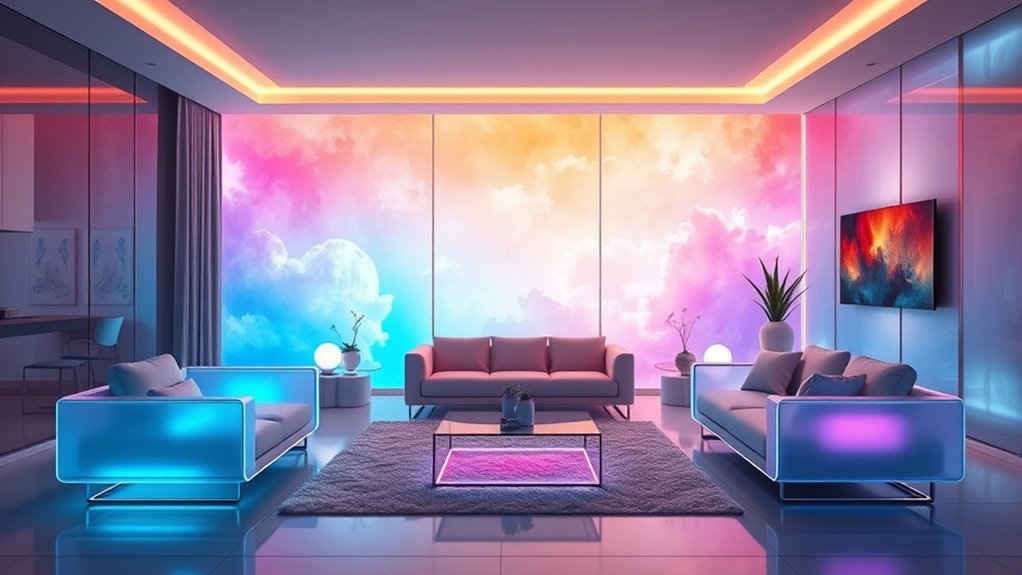
Building on the recent shift toward practicality and convenience, home innovation is poised to focus heavily on integrating technology that enhances everyday living. Modular design will become more popular, allowing you to customize spaces easily and adapt your home to changing needs. With modular components, you can reconfigure rooms or upgrade sections without major renovations, saving time and money. Home automation will also play a key role, making daily tasks simpler and more efficient. Expect smart systems that control lighting, climate, security, and appliances seamlessly from your smartphone or voice commands. This focus on flexible, connected living means your home won’t just be a place to live—it’ll be an intuitive environment that adapts to your lifestyle, offering convenience and personalization at every turn. Incorporating multi-functional furniture can further optimize space and functionality, making your home more adaptable to changing needs.
Frequently Asked Questions
Will the Fast-Fading Home Trends Affect Real Estate Investment Strategies?
You should consider how fast-fading home trends impact your real estate investment strategies. As urban renewal projects emphasize luxury amenities, staying adaptable is key. You might find that investing in properties with modern features and prime locations positions you for long-term gains, even if certain trendy styles diminish quickly. Keep an eye on market shifts to ensure your investments align with emerging preferences and urban development trends.
How Do These Trends Influence Long-Term Home Value Appreciation?
These trends impact long-term home value appreciation by emphasizing sustainable design and strong neighborhood branding. When you incorporate eco-friendly features, it boosts your home’s appeal and future resale value. Additionally, a neighborhood known for its branding attracts buyers and investors, enhancing property appreciation over time. Staying ahead with sustainable and community-focused upgrades can secure your home’s worth, even as fleeting trends come and go.
Are There Demographic Groups Most Impacted by These Shifting Trends?
You’ll notice that demographic differences, like generation gaps and economic disparities, shape how shifting housing trends impact you. Younger generations often chase trendy, transient spaces, while older groups value stability. Economic disparities mean some can adapt quickly, embracing new styles, whereas others struggle to keep up. These trends create diverse demands, making it essential to recognize how different demographic groups are affected, influencing their housing choices and long-term investments.
What Role Did Social Media Play in Accelerating These Home Trend Fads?
Social media played a big role in speeding up home trend fads by fueling viral challenges and influencer collaborations. You likely saw popular influencers showcasing quick decor updates or DIY hacks, making these trends seem more accessible and urgent. As viral challenges caught on, more people jumped in, enthusiastic to share their own takes. This rapid spread created a sense of FOMO, pushing trends to fade just as fast as they appeared.
Could Any of These Trends Make a Comeback in the Future?
You might see retro styles or minimalist designs making a comeback someday. Trends often cycle back as people seek nostalgia or simplicity. Social media amplifies these shifts, making it easier for vintage or sleek modern looks to resurface. If you’re open to changing your space, keep an eye out for these styles returning, as they often gain popularity again in new, creative ways.
Conclusion
As the home trends fade like passing seasons, it’s clear that what once sparked excitement now drifts into the past. You’re standing at a crossroads, holding the torch of innovation and choice. Just as a phoenix rises from ashes, new ideas will soon ignite your imagination again. Embrace the cycle, knowing that every ending signals a fresh beginning—your next home adventure is just around the corner, waiting to be written in the stars.
